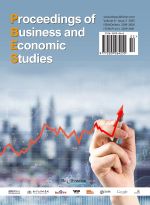Investigation into Custom-Built Operational Models for Small and Medium-Sized Commercial Banks
Abstract
This research centers on commercial banks’ human resource allocation. It constructs a staffing model grounded in human capital value creation theory and analyzes relevant factors through longitudinal panel data regression. Taking City Commercial Bank A as an instance, the model identifies 12.3% redundant positions and matches jobs with business scale. Additionally, the study proposes a “staffing effectiveness salary” system, providing a framework for optimizing commercial bank human capital in the digital age.
References
Wang X, Li H, 2018, Strategic Human Resource Planning in Banking. Journal of Financial Management Research, 45(3): 123–135.
Zhang W, 2019, Job Analysis and Staffing Design, Economic Management Press, Beijing.
Chen J, 2020, Organizational Design and Staffing Optimization. Human Resource Management Journal, 32(4): 567–582.
Grant AM, 2012, Algorithmic Job Design: From Taylorism to Modern Management. MIT Sloan Management Review, 53(2): 45–58.
Davenport T, Kirby J, 2022, Metaverse for Leadership Development: Implications for In Basket Testing. MIT Sloan Management Review, 64(3): 112–125.
Xie Q, Xua Q, Chen Li, et al., 2022, Efficiency Evaluation of China’s Listed Commercial Banks based on A Multi-period Leader-follower Model. Omega, 110: 102615.
AlKulaiba YA, AlAli MS, 2020, The Estimation of Banking Industry Staffing Level Benchmark: A Case Study on Kuwaiti Banks. Accounting, 7(1): 95–98.
Heinzel M, Liese A, 2021, Managing Performance and Winning Trust: How World Bank Staff Shape Recipient Performance. Rev Int Organ, 16: 625–653.
Baril K, 2025, Staffing Rightsizing: Analyzing Staffing Studies to Inform Potential Rightsizing Practices Rightsizing Practices. Reference Services Review, 53(1): 43–51.

